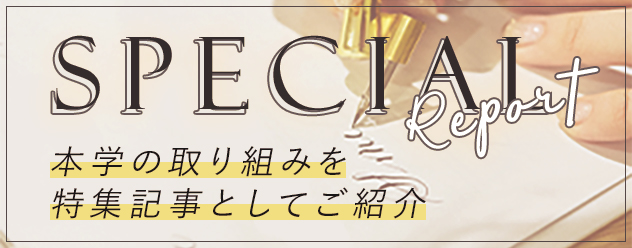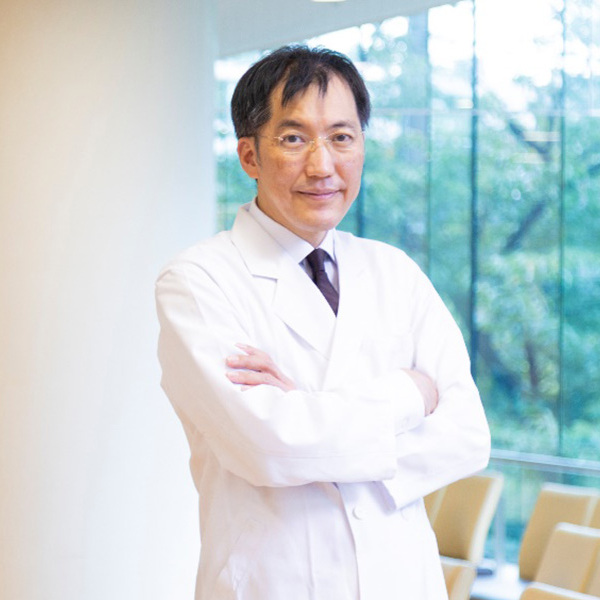Professor Hajime Kono of the Department of Internal Medicine School of Medicine, Faculty of Medicine
The mechanism of chronic inflammation involved in the development of various diseases such as cancer, diabetes, and Alzheimer's disease
I am trying to clarify it from the perspective of "Danger signal", which is a sensor inside the body.
So far, we have elucidated the mechanism by which uric acid and cholesterol crystals act as Danger signals to worsen arteriosclerosis.
We aim to lead to new treatment and prevention strategies for arteriosclerosis.
The intracellular molecules in the body
Functions as a sensor of innate immunity

Immunity is the function of protecting the body from pathogens such as bacteria and viruses, and eliminating waste products and dead cells in the body. It also works to repair damaged cells. This immunity is divided into two types: "innate immunity" that is inherent in all living things, and "acquired immunity" that memorizes a pathogen that has been infected once and prepares an antibody that works only against that pathogen (antigen). There is. Innate immunity causes an "inflammatory reaction" as the first group to respond to the invasion of pathogens and damage to cells of the body, and acquired immunity is the second group to respond when it is still unprotected.
When innate immunity detects the invasion of foreign enemies, it uses sensors such as Toll-like receptors (TLRs) that can identify the characteristic structures of bacteria and viruses. Innate immunity can detect that one's body has broken and cause a reaction even in the absence of foreign enemies. This self-generated stimulus is called the "Danger signal" and is programmed by the Danger signal to trigger an inflammatory response when the sensor is activated.
Recent studies have shown that molecules such as adenosine triphosphate (ATP), uric acid, DNA, and RNA, which are abundant in cells, act as Danger signals and cause an inflammatory reaction. All of these are molecules that exist inside the cell, and when the cell is damaged and causes "cell death," the molecule that leaks from the torn cell membrane becomes a Danger signal and is recognized by neighboring cells to cause an immune reaction.

The "Danger model" (right) also emits a Danger signal as a signal to signal dead cells.

However, the longevity of humankind has caused problems. Recognizing that cell death of the heart, which has advanced arteriosclerosis and ischemia due to aging, is the target of elimination, inflammation promotes necrosis of the heart. Professor Kono is tackling this problem and is conducting research to elucidate the mechanism of Danger signal and chronic inflammation, which have many unexplained parts.
"Innate immunity is an extremely sophisticated immune system, but the inflammatory response that occurs in innate immunity is a mechanism that can be called a" double-edged sword. "I would like to find a clue to control it somehow." (Professor Kono)
Uric acid, which is a Danger signal
Affects worsening arteriosclerosis
Of the Danger signals in the body, Professor Kono focused on uric acid. Uric acid is a product of purines and is known to cause gout. Gout causes severe pain such as tingling and stinging from inside the body as uric acid levels in the blood rise and crystallized urate crystals enter the joints. Specifically, it is an acute inflammation that occurs when a protein such as an inflammatory cytokine called IL-1 is produced by stimulation of urate crystals and the action of leukocytes is activated to attack it.
On the other hand, Professor Kono examined the possibility that uncrystallized uric acid causes inflammation. Therefore, when we conducted a mouse experiment with Assistant Professor Yoshitaka Kimura (Department of Microbiology, Faculty of School of Medicine, Teikyo University), we found that even uric acid within the physiological concentration range becomes a Danger signal of chronic inflammation and worsens the state of arteriosclerosis. Revealed.

In the experiment, we created a transgenic mouse with a reduced uric acid level by introducing an enzyme that decomposes uric acid into a mouse gene that has a lower uric acid level than humans. As a result of examining the degree of arteriosclerosis by causing arteriosclerosis in these mice, it was found that the lower the uric acid level, the less the arteriosclerosis worsens. In addition, Assistant Professor Kimura elucidated the molecular mechanism by which uncrystallized soluble uric acid promotes arteriosclerosis via AMPK (AMP-activated protein kinase), an enzyme that works to maintain the energy balance of the body. By suppressing uric acid, which is a Danger signal, inflammation is less likely to occur, and as a result, it has been shown that it may be effective in suppressing the progression of arteriosclerosis.
"Mice, among mammals, have lower uric acid levels than humans and chimpanzees, but we conducted experiments by inducing arteriosclerosis in transgenic mice with even lower uric acid levels. Professor Hosoyamada Makoto (Teikyo University Faculty of Pharmaceutical Sciences), who is skilled in the techniques of creating model mice, has genetically modified mice to create mice with uric acid levels similar to those of humans, and we are conducting joint research with him." (Professor Kono)
Due to cholesterol crystals
Discover the mechanism of acute inflammation
Speaking of diseases associated with chronic inflammation, allergic diseases such as asthma and autoimmune diseases such as rheumatism are known. Recently, evidence has been found one after another showing the effects of chronic inflammation due to natural immunity on diseases such as cancer, obesity, arteriosclerosis, and Alzheimer's disease, as well as on aging.
For example, arteriosclerosis is a metabolic disease in which fat components are deposited on the walls of arterial blood vessels due to excessive nutrition, and it was thought that cholesterol accumulated on the cell walls is crystallized and stabilized. As it progresses further, the arterial wall narrows and blood flow stops, leading to ischemic diseases such as cerebral infarction and myocardial infarction. In addition, when endovascular treatment such as a catheter is performed, cholesterol crystals on the arterial wall enter small peripheral arteries, causing a disease called cholesterol crystal embolism.

However, according to a study by Professor Kono et al., It became clear that arteriosclerosis is a disease in which natural inflammation plays a major role. It has been found that cholesterol crystals appear much earlier than previously thought. Acute inflammation generated in the arterial wall by stimulation of cholesterol crystals triggers the Danger signal released from the injured artery, which activates the molecular mechanism called inflammasome, which is a protein complex that causes inflammation, and causes arteriosclerosis. It is a mechanism that makes it worse. It was also found that arteriosclerosis is less likely to progress in mice that have intentionally lost the inflammasome.
"This study found that cholesterol crystals are the Danger signal, but it is possible that uric acid is being released from the arteries that caused cell death due to acute inflammation. Elucidating the pathophysiology of arteriosclerosis from both sides. I think we need to do it. "(Professor Kono)

In both basic research and clinical
Save the patient in front of you and the patient of the future
Research on chronic inflammation and arteriosclerosis is also a major challenge for Professor Kono, who, as a clinician, faces autoimmune diseases such as rheumatoid arthritis and systemic lupus erythematosus (SLE). In particular, patients with rheumatoid arthritis are more likely to develop arteriosclerosis and are at high risk of developing cardiovascular diseases such as myocardial infarction. In addition to the effects of chronic inflammation, this is also associated with the condition of rheumatoid arthritis, and it has been found that suppressing the symptoms of rheumatoid arthritis and achieving a state of remission also leads to the control of arteriosclerosis.
In addition, long-term administration of steroids (corticosteroids), which are standardly used in autoimmune diseases, is also one of the causes of worsening arteriosclerosis. For rheumatoid arthritis, there are effective alternatives to steroids, but for other autoimmune diseases, many have to rely on steroids, and the effects on arteriosclerosis cannot be helped.

"Patients with autoimmune diseases have been associated with the disease for decades, but even if the disease can be controlled, chronic inflammation and the effects of steroids can exacerbate arteriosclerosis. As a doctor, it is necessary to look at the patient as a whole, not just the target disease. To do so, we must inevitably deepen our understanding of the pathophysiology of arteriosclerosis. "(Professor Kono)
Studies are elucidating the mechanism by which uric acid and cholesterol crystals are involved in chronic inflammation, and some have been found to be effective in suppressing the deterioration of arteriosclerosis. However, these are still only mouse-level achievements. "We still have to overcome a number of hurdles for clinical application, but we hope that our research will be the beginning of a new therapeutic strategy," says Professor Kono.
Clinician treatment is an act of saving the patient in front of him, but basic research will lead to saving the patient of the future. Driven by the desire to save as many people as possible from chronic inflammatory diseases, Professor Kono is doing his best in both clinical and research.





